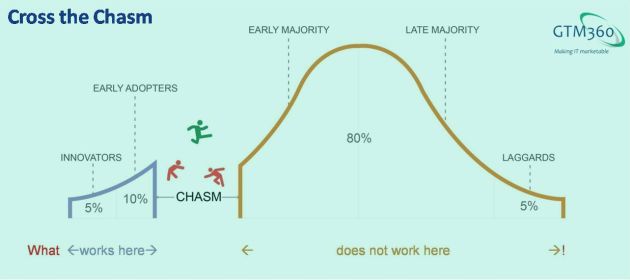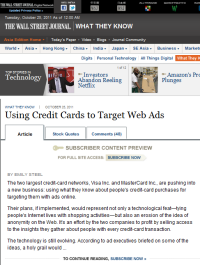As I’d pointed out in this blog post a couple of years ago, just because micropayments support convenient ways to pay for digital content doesn’t necessarily mean that people will pay for it. People will pay for content only if they can’t get it for free easily and when they find enough value in it worth paying for.
These are hardly pathbreaking insights into consumer behavior but it seems like Wall Street Journal doesn’t get them.
WSJ keeps sending me regular emails urging me to sign up for a paid subscription (see Figure 1).
When you click the link to an article on these emails, or on third-party newsletters and blog posts for that matter, you’ll reach a certain page on the WSJ website where you can read the first few lines of the article (see Figure 2).
If you wish to read beyond that, you’ll be required to sign up for a paid subscription. At least, that’s what WSJ would tell you.
You really don’t need to pull out your credit cards to sign up for a subscription to read the full article. Instead of clicking the “TO CONTINUE READING, SUBSCRIBE NOW” link at the bottom of the teaser page, simply Google for “wsj” followed by the title of the article – which you can copy and paste from where you first saw mention of the article – the very first search result (see Figure 3) will take you to another page on the WSJ website where you can get the full article for free (see Figure 4). Yes, it’s really that simple, try it out!
When just a few more clicks will get me WSJ’s content for free, there’s a fat chance that I’ll sign up for a WSJ paid subscription!
Now, do these extra clicks pose more friction? No. Subscribers would anyway have to pass through the paywall logon screen where they’d need to enter the username and password of their WSJ account before they can get hold of full articles. This step that only subscribers have to follow perhaps causes greater friction – sigh, yet another username and password to remember! – than the extra clicks required to gain gratis access via Google Search.
I’m guessing that this apparent anamoly exists because WSJ has likely permitted Google Search to trawl through its entire website, including pages that lie beyond the paywall, in order to juice up its SEO mojo. One unintended consequence of this is that the link for the full article shows up on the Google SERP (search engine results page). By clicking it, non-subscribers can directly get inside WSJ’s walled garden that carries full articles without getting blocked by WSJ’s paywall.
Wall Street Journal might want to take note that GigaOm Pro and San Francisco Business Times – two other paid content sites I checked – don’t permit a similar free-of-cost backdoor entry into their walled gardens. I’m sure there’re many others. If readers are aware of other media websites where this hack works – and doesn’t work – it’d be great if they could let others know by leaving behind comments below this post.




